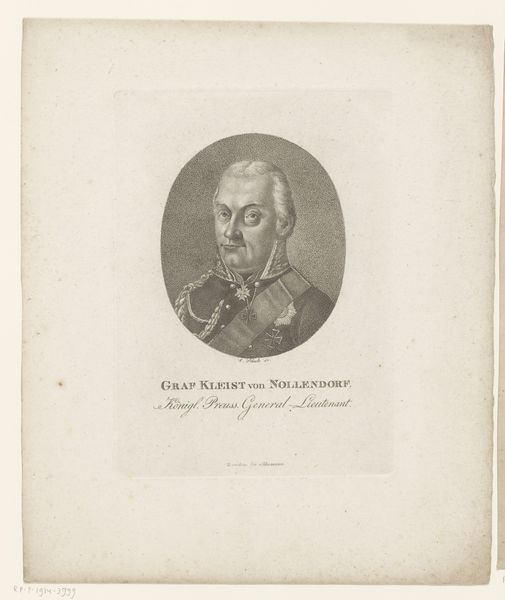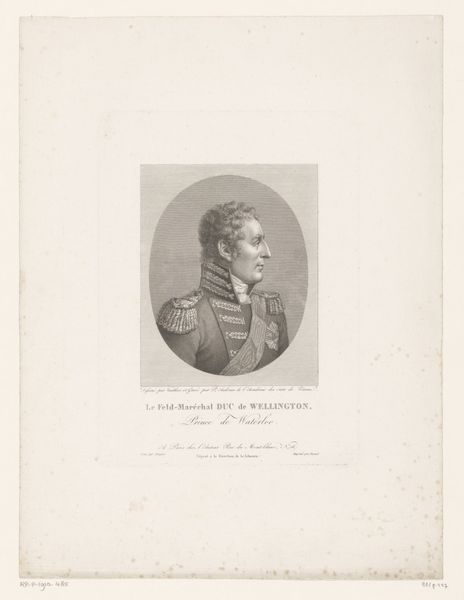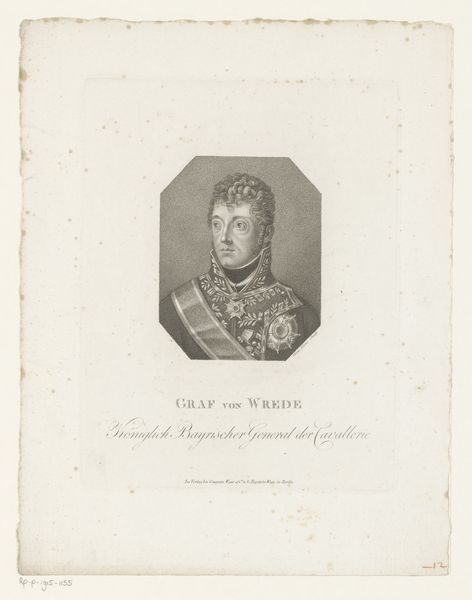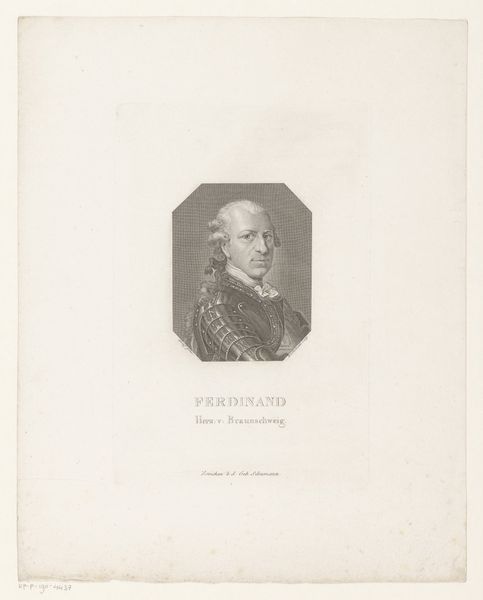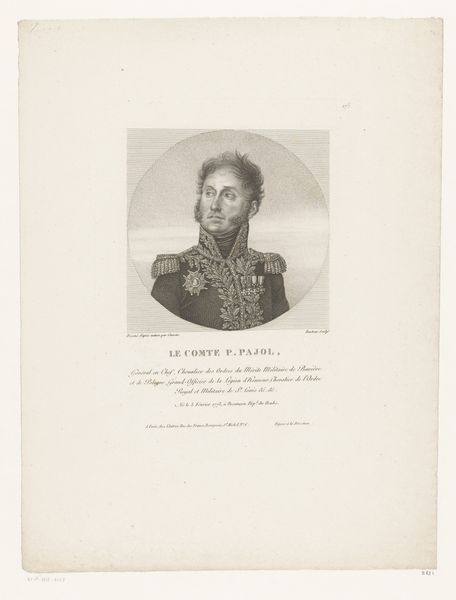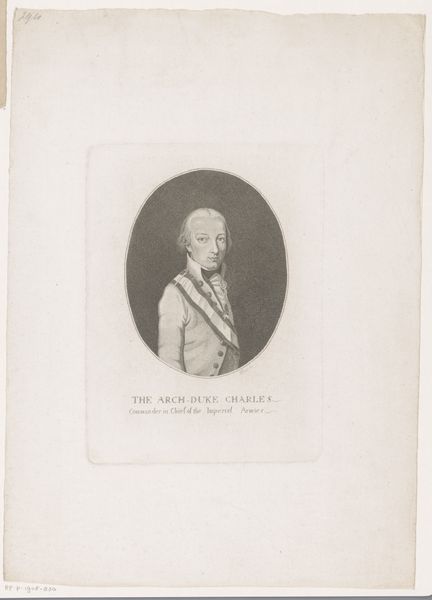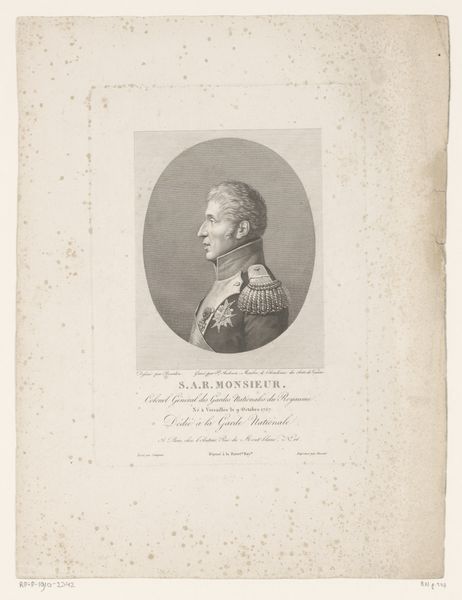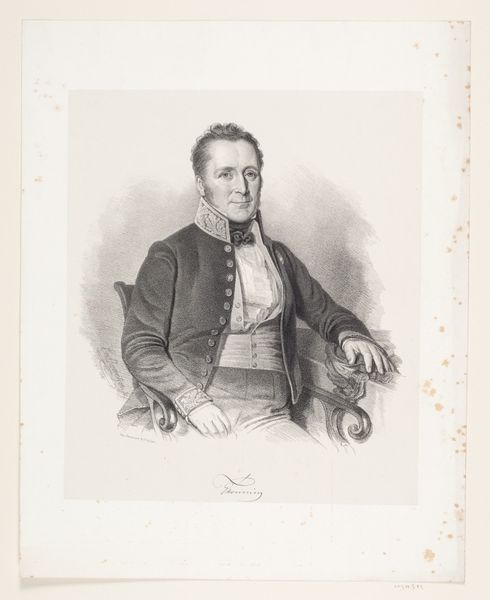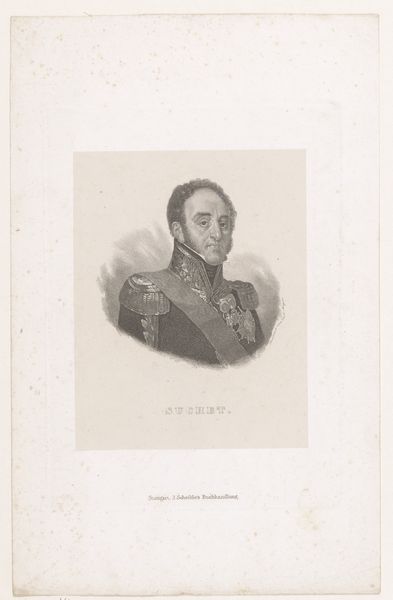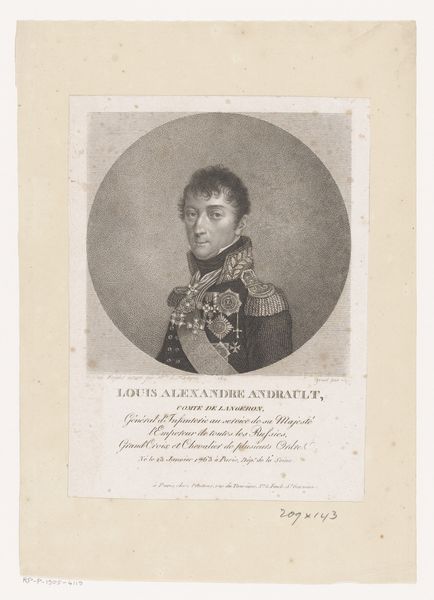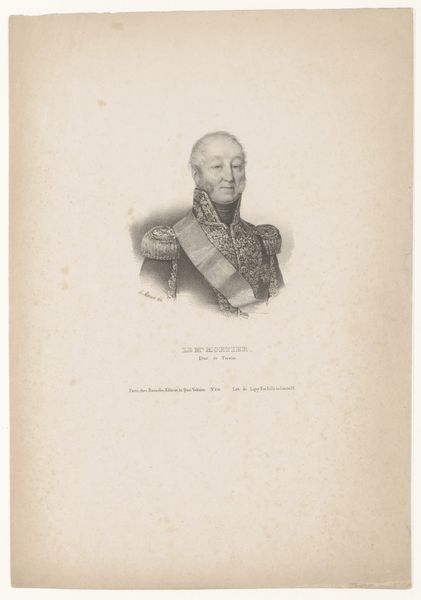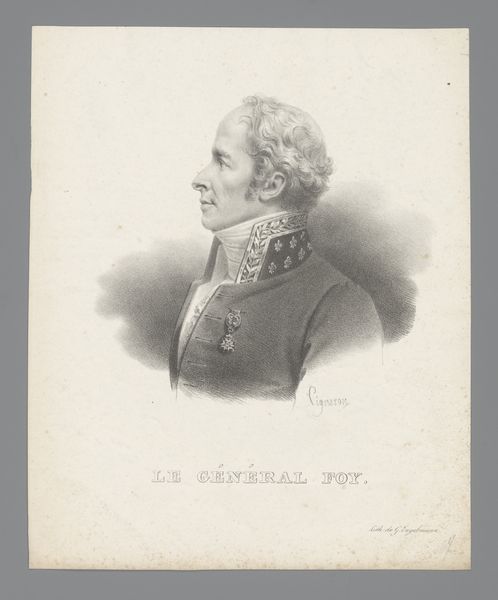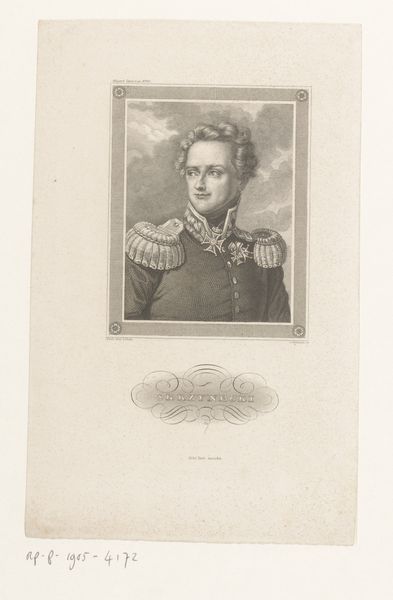
print, etching, engraving
#
portrait
#
neoclacissism
# print
#
etching
#
romanticism
#
history-painting
#
engraving
#
watercolor
Dimensions: 258 mm (height) x 180 mm (width) (bladmaal)
Curator: Ah, here we have "Nikolaj I af Rusland," an etching and engraving printed in 1830, now residing at the SMK, Statens Museum for Kunst. It's a compelling piece of historical portraiture. Editor: Immediately, I notice the stark contrast and almost severe formality of the composition. It projects a very specific mood, quite serious. Curator: It's interesting to consider that Nikolai I was known for his autocracy and suppression of dissent. Prints like these served a clear purpose: to project power and legitimacy. Editor: The rigid posture, the controlled lighting… every element seems carefully orchestrated to communicate authority. It’s less about capturing likeness and more about constructing an image of leadership. Did you notice the precision in the rendering of his uniform? Each thread seems deliberate. Curator: Precisely. The uniform itself is laden with symbolism—signifying military might and imperial status. He presents a meticulously constructed self, aligning with Neoclassical ideals and the Romantic movement, which idealized historical figures. I see both at play here, creating meaning through image, imprinting this power onto his subjects’ memories. Editor: I see the blend there; the romantic idealism and Neoclassical austerity fight for dominance. This push-pull between freedom and restraint—visually quite striking! The stark lines against the softer etching create visual dynamism in this otherwise stiff setting. It also appears the piece might originally have been printed as a water colour? Curator: That watercolour base likely added depth. While, it may subtly add some nuance and "humanizes" an otherwise almost imposing and intimidating portrait, I feel as if we are both left thinking: Is that nuance *meant* to be there? Either way, prints such as these would have been disseminated widely, shaping public perception and memory. Editor: Exactly! Deconstructing the formal qualities helps to uncover the intended, if subconscious effects, even today. What strikes me most is how the composition’s very design communicates volumes beyond simple representation. It’s a visual statement that holds significance, still visible after so many generations. Curator: Agreed. The piece reminds us that portraits are not just images, but potent artifacts carrying cultural and historical weight. I will certainly have something to think about later.
Comments
No comments
Be the first to comment and join the conversation on the ultimate creative platform.
